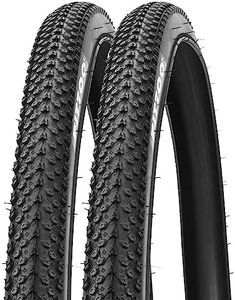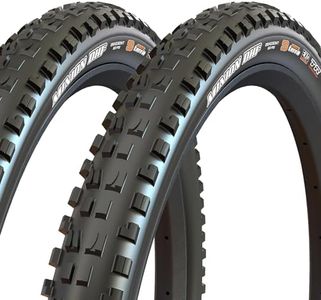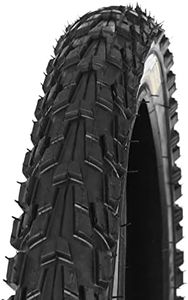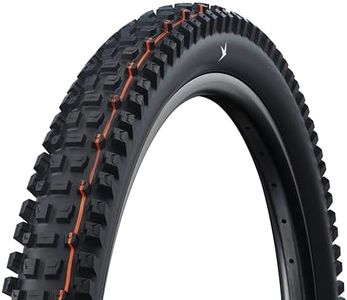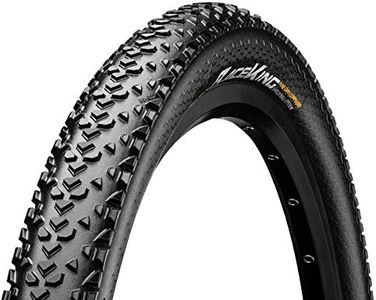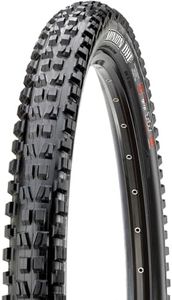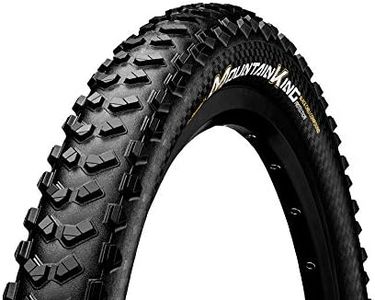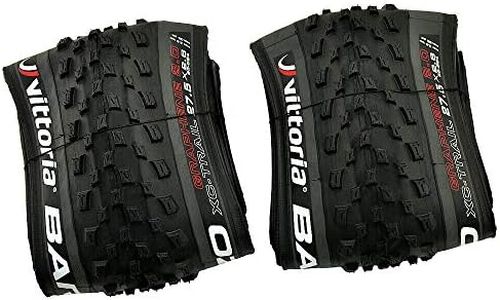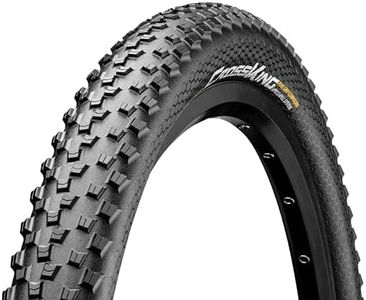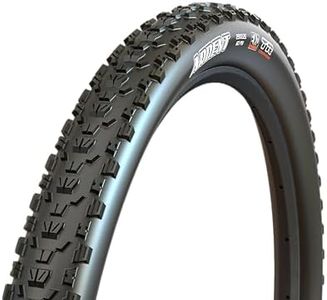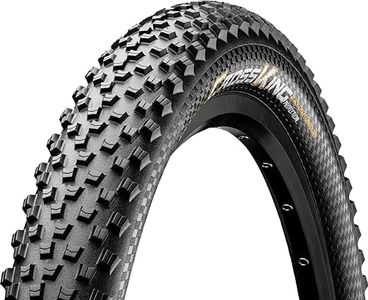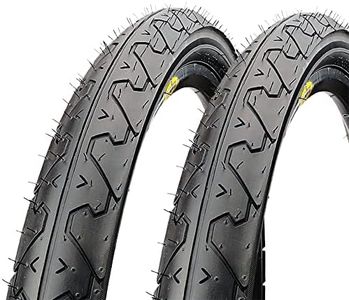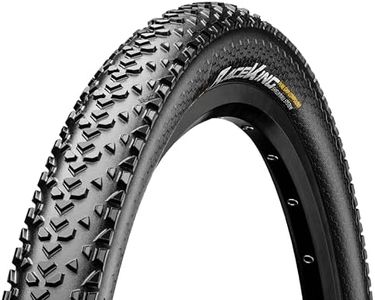We Use CookiesWe use cookies to enhance the security, performance,
functionality and for analytical and promotional activities. By continuing to browse this site you
are agreeing to our privacy policy
10 Best Mountain Bike Tires
From leading brands and best sellers available on the web.Buying Guide for the Best Mountain Bike Tires
Choosing the right mountain bike tires is essential for getting the best performance, comfort, and safety while you ride. Tires are your contact point with the ground, so their grip, durability, and size dramatically affect how your bike handles different trails. Picking the right tires isn't just about finding the most aggressive tread or the widest option; it's about matching your riding style, terrain, and needs to the tire's features. Start by considering where you ride most often—rocky, muddy, sandy, or hard-packed trails require different tire characteristics. Then look into the key tire specifications to find your best match.Tire WidthTire width refers to how wide the tire is, usually measured in inches. Wider tires (2.4" and above) give you more grip and comfort, as they have a larger contact area with the ground and can be run at lower pressures for better shock absorption. They work well for loose, muddy, or technical terrain where stability is important. Medium width tires (around 2.2" to 2.3") are a good all-around choice, providing a balance between grip and rolling resistance, suitable for mixed and hard-packed trails. Narrow tires (under 2.1") are lighter and roll faster on smooth surfaces, so are preferred for racing or dry, hard-packed trails. To pick the right width, think about what terrain you ride most often and how much you value grip versus speed. Check your bike frame to make sure it can accommodate the size you want.
Tread PatternThe tread pattern is the design of the knobs and grooves on the tire's surface. Heavier, deeper treads with pronounced knobs give better grip and control in muddy, loose, or rocky conditions but have higher rolling resistance and can feel slower on smooth trails. Tires with lower, closely spaced knobs are designed for speed on hard-packed surfaces but provide less grip in loose conditions. Some tires balance both, having aggressive side knobs for turning grip and lower center tread for better rolling. Your choice should reflect your typical riding surfaces: aggressive for challenging terrain, semi-slick or low-profile for smooth trails, and mixed tread for versatility.
Tire DiameterMountain bike tire diameter is usually 26", 27.5" (also called 650b), or 29". Larger diameters (29") roll over obstacles more easily, maintain speed better, and hold momentum, making them good for longer rides or rougher terrain. Smaller diameters (26") are lighter and more agile, making the bike easier to handle, especially on twisty trails. The 27.5" size offers a balance between the two. Your bike frame can only fit certain diameters, so first know your frame's size. Choose the diameter based on your terrain (smoother for bigger wheels) and your preference for agility versus stability.
Tubeless CompatibilityTubeless compatibility means whether the tire can be set up without an inner tube, sealing directly to the rim. Tubeless tires reduce the risk of punctures, allow you to run lower pressures for more grip, and can be lighter overall. However, they need tubeless-ready rims and special sealant, and initial setup can be more involved. If you ride aggressively or on rocky trails, tubeless is worth considering for better performance. If you prefer easier maintenance, regular tube-type tires are still a good choice.
Casing and Puncture ProtectionThe casing is the structure or fabric layer under the rubber of the tire, impacting both feel and durability. Tires come with different casing options: lightweight casings favor speed but can puncture more easily, while reinforced casings offer more protection against sharp objects and rough trails but are heavier. Some tires add extra layers or materials specifically for puncture protection. If you often ride on sharp rocks or have had puncture problems, choose a tire with reinforced casing or specific puncture protection. For smoother trails where weight matters more, a lighter casing might suit you.
Rubber CompoundThe rubber compound is the blend of materials making up the surface of the tire and determines how soft or hard the tire feels. Softer compounds provide more grip but wear out faster and can feel slower. Harder compounds last longer and roll faster but compromise some traction. Some tires use a dual or triple compound, offering softer rubber on the sides for grip and harder in the center for durability. Base your choice on your need for grip versus tire lifespan: more aggressive riding and technical trails may benefit from softer compounds, while casual riding can go with harder rubber.
